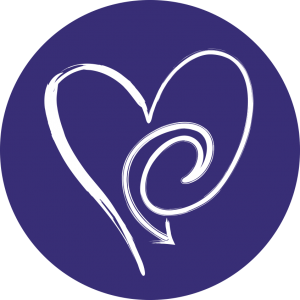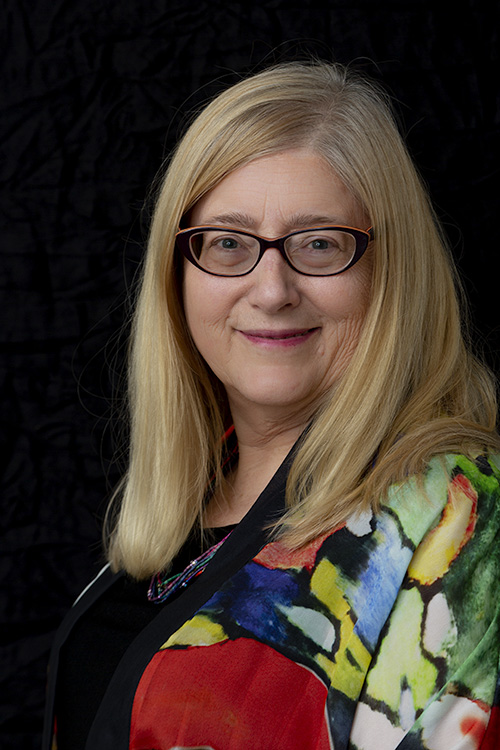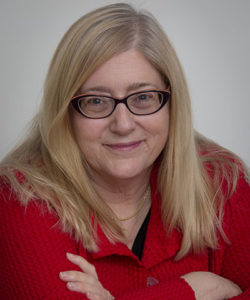None Dare Call it Normal
The email landed in my box with a nearly audible thud.
Dear Stella,
It’s time for your online follow-up visit to the Brain Health Registry!
Just like your first visit, you’ll be asked to update your information by answering questionnaires and re-taking brain tests.
Your participation is vital to furthering the study of brain diseases in your family, community and beyond.
You are helping to revolutionize brain health research and accelerate the search for treatments for brain disease.
Call it Normal?
Two years ago I signed up to perform what I thought was a public service for older persons. Since then I’ve been asked how my thinking is deteriorating every way to Sunday, with nary a question about the good stuff. Nothing about how my perspective on lived history contributes to understanding the present. Nothing about how many times I’ve made Queen Bee in the New York Times spelling game (Hint: every day).
Nothing, tellingly, about how my next book is coming along. It’s all timed tests to remember flashing pictures and “tell me, which of these dangerous, expensive and marginally effective anti-dementia drugs are you taking?” They ask about each drug right in the clinical trial questionnaire. Imagine all ten thousand older participants in this study, having their internalized ageism triggered by the focus on the negative and then being offered dodgy solutions. Which begs the question: Is this really a clinical study, or is it a pharmaceutical ad with a veneer of medical authority?
We know that brains change with age. We know that some tasks, like remembering names, are harder while other functions, like synthesizing across subjects, get easier. After sixty we refocus from the trees to the forest. So, are these changes “brain disease?” Who gets to decide what is a disease, anyway? And who gets to decide which changes should be medicated?
Medical Sociology
It turns out there is a whole field called medical sociology that studies these questions. Sociologists distinguish between the biological condition of having a disease and the social meaning of having an illness. Certainly there are real diseases, but there is also the meaning we make. For example, many people with seizure disorders are more affected by others’ reactions than by the seizures themselves.
Medical sociologists study conditions that are loaded with cultural significance that affects how physicians view and treat these conditions. On the one hand, there are stigmatized conditions, such as being fat, where overtreatment can be a problem. On the other hand, there are what sociologists call “contested illnesses,” such as fibromyalgia (or, until recently, long COVID), for which it is difficult to get research funding.
Medical sociologists also look at the ways the internet has changed the isolating experience of having a medical condition into a group conversation. This communal experience in online groups, along with online access to medical journals, is shifting the power dynamic between physicians and patients–particularly patients with stigmatized or contested illnesses.
A third line of sociological research examines how medical knowledge can reinforce social inequality. For example, when women with PMS exhibit traits that are considered “unfeminine,” such as anger and aggression, this behavior is seen as evidence of an individual disorder rather than looking at social reasons why women are angry. Similarly, having a healthy fat body can be viewed medically as an illness rather than looking at systemic fatphobia.
Researchers in medical sociology are also examining the role of the pharmaceutical industry in shaping medical knowledge to sell products. The drug industry has a long history of influencing physicians through everything from free lunches to expensive vacations. Studies show that even a free slice of pizza can affect a doctor’s decisions.
Brain Health
Which brings us back to the Brain Health Registry and the stigmatization of older age. The Framingham Study showed that the rate of dementia in the United States has declined by 20% per decade since the 1970s, and the average age at which it is diagnosed has risen from 80 to 85. Only 5% of persons aged 71 to 79 have dementia. The percentage of people in that age group who wonder if misplacing their keys means they have Alzheimer’s is likely much higher. And we know from Dr. Becca Levy’s studies that fears about aging contribute to poor health in older years. Combating ageism does not, however, add to the profits of the pharmaceutical industry.
The meaning we make of aging, like the meaning we make of disability and the meaning we make of body fat, is a mélange of scientific data (or the lack of it) and societal bias. One thing is clear: Our bodies (and our lab results) change as we age. But which changes in our older years are normal? Which should be labeled as diseases and treated? Consider these examples.
- “Pre-Diabetes:” Many people over 60 when tested are found to have slightly higher blood sugar. “Pre-diabetes” is a diagnosis that has important meaning or is a scam perpetrated by Big Pharma, depending on which article you read. The term “pre-diabetes” was coined by the American Diabetes Association, an organization rated as having an extreme level of conflicts of interest (ADA accepts donations of up to $27 million a year from drug companies). And when the ADA broadened its definition of pre-diabetes, so that many people who had been considered to have normal blood sugar were suddenly “pre-diabetic,” similar organizations in Europe did not follow suit. Another study showed that persons over sixty diagnosed as “pre-diabetic” seldom progress to diabetes. While some physicians continue to treat this condition with medication, other physicians call pre-diabetes a classic example of overmedicalization for the benefit of drug companies.
- Low Thyroid: The level of thyroid production decreases with age. The point at which this decrease becomes a condition that should be medicated is not clear, with various researchers suggesting different test values and strategies for treatment. The ongoing conversation among researchers about where to draw the line for thyroid between normal aging and a disease state is thoughtful and measured. This contrasts sharply with the “pre-diabetes” controversy in one important way: Thyroid replacement is dirt cheap, and drug companies have little stake in the outcome.
- Low Estrogen: Women’s estrogen production continues to decline as we age. From the Women’s Health Initiative (which scared the pants off physicians prescribing HRT back in 2002) right down to the May 2024 publication of a new observational study of ten million women over 65 (which documents a 19% lower mortality in women on HRT than in the control group), the subject of hormone replacement in women has been fraught. Some conditions seem to improve with HRT while others worsen, and which is which depends on which data you look at. In the new study, for example, deaths from breast cancer declined with HRT use–the opposite of the received wisdom. There is a lot riding on this discussion. About half of women past menopause have symptoms that could be treated with HRT. And although the cost to produce estradiol is low and there are no patents on this simple steroid, even generics companies continue to charge predatory prices. There is even more money at stake with this controversy than for “pre-diabetes.”
How do we, as medical consumers, make sense of this sometimes contradictory information? How do we decide for ourselves which changes in our own minds and bodies we consider normal, and which we choose to treat? Here are a few thoughts.
- Follow the Money: If there is a lot of money behind a course of treatment (or even a diagnostic), ramp up your skepticism.
- How does a condition affect you personally? You are not a statistic. What impact does a condition have on your quality of life? Is that changing over time? Can you track your own data at home (with an AppleWatch, a blood pressure cuff, an SpO2 meter, etc.)? Take your experience seriously when it’s time to discuss whether and how to treat.
- Read up on what ails you. When you see your physician, be ready with questions.
- Push back on ageism: Yours and your health care provider’s. Medical ageism and medical sexism are real. Even older female medical professionals can have internalized bias that affects care.
As for me, I’m mulling over whether to participate in the Brain Health Registry one more time. If I do, I’m going to take pictures of the questionnaire as they come onscreen to document the study’s negative bias.
Because when it comes to medical issues, there’s no substitute for data.



17 Responses
I am so pleased that I found you, Stella! As I move into my 60s, I find myself walking the talk of my profession. I’m an academic gerontologist, and my entire career has been based on understanding and educating generations of students (aged 18-80) on the bio-socio-psychology of aging. Over the last 10 years, I have watched the “age wave” start to crest. I am boggled by the media’s surprise and the opportunism exercised by every industry, from fashion to pharmaceuticals.
Despite this cultural awareness and the statistic that those over age 65 will soon account for over 25% of the American population, when I go to the doctor to ask why my LEFT knee is hurting, I am dismissed with an ageist remark about “60-year old knees hurt.” Well, my RIGHT knee is the same age, and it’s fine! We’ve got a long journey ahead of us, and I am thrilled that there is a groundswell of vocal, articulate women who can represent the cultural shift needed to be seen and heard. Count me in!
Thank you, Pamela. And I’m sure you are tuned in to others writing about older women’s health including Tracy Gendron and Becca Levy. Plus if you’ve not signed up for it yet, you can ask to subscribe to the newsletter from the Women’s Age Lab here:
Cheers!
What a real article, I am an 80-year-old woman who does not take any medication, this is because I have always ignored the doctor’s advice. Meanwhile, I have seen doctors who are in worse health than their patients. When my blood pressure increased for the first time, the doctor gave me medications, I did not take them, but I started physical activity and today I am ok. When I started working on the computer, I used to forget the folders where I had the documents and under what name I saved them, now that I have multiple files, I don’t forget anything, memory training is a miracle.
Thank you for your thoughts, Elmira, and glad you’re doing well. Exercise is so important for all of us, and how great to control blood pressure through movement.
Cheers,
Stella
Another great article, Stella! Big Pharma gets a hefty amount from my SS check already. Needless to say, my primary care physician is getting tired of me always questioning and seeking alternative medicine to handle some of the problems. We disagree on “standards” mostly B/P, Glucose, and A1C with relation to age and family heredity. This makes me think it’s time for a new PCP! Thanks for the information you write about, it’s makes me sit back and think?????
Thank you, Ruth.
It’s amazing how these ranges are so often presented as if they are written in stone, when they may be based on questionable data and when the people determining the ranges may be influenced by Big Pharma.
It certainly pays to ask questions.
Excellent post. Thank you. I am very skeptical of our healthcare system and the medicalization/diseasification of our normal biological processes. The system is fraught with perverse incentives.
Thanks Billie.
Perverse incentives indeed.
Great post, thank you for sharing it.
Thanks Linda!
Excellent discussion- spot on! Beware of financial interests of Med- Pharma .
Thank you, Margaret!
Thanks for sharing! Grest job!
Thanks Steevie!
Very interesting observations. I’m 76 and pre-diabetes as a diagnosis was observed in my blood work last year as well as this year and I hadn’t thought that it could be fairly normal for my age group with a blood glucose of 106.
The one I always wonder about is the diagnosis of high blood pressure. Years ago, it was only diagnosed if the pressure was 140/90 and now even the elderly are supposed to be at 120/80 or less! How has big Pharma influenced this change and how much is actually influenced by good scientific studies? Perhaps you know the answer. I am not a “pill person” as my doctor says but she would really like me to lower pressure that I consider normal for my age (low 130’s over low 80’s).
I am new to your blog and I appreciate you taking the time so write it!
Thanks Linda, much to consider in your comment.
Two items of interest I found on a quick search:
1. The guidelines for high blood pressure in older adults are not the same in the US as they are in Europe.
“The 2018 ACC/AHA1 and ESC/ESH guidelines have different definitions for blood pressure goals: <130/80 mmHg for ACC/AHA and <140/90 mmHg for ESC/ESH." See this article:
Whether that means there was Pharma influence on the US standard I wasn’t able to determine yet. However, this difference in European vs. US clinical guidelines does mirror the situation with pre-diabetes discussed in my blog, where there was a clear conflict of interest for the American organization that narrowed the range of “normal.”
2. Even in Europe, conflicts of interest among physicians writing clinical guidelines are common. “The majority of the doctors that write clinical guidelines have a relevant financial conflict of interest. In addition, industry sponsorship of studies is frequent, and authors are often conflicted with the study funder. We propose that physicians that write clinical guidelines should be free of such financial conflicts of interest to maintain scientific integrity and independence in the clinical guidelines.” See this article:
I’d love to find an article like that concerning authors of American clinical guidelines. Would not be surprising if the percentage of guideline authors with conflicts were even higher.
Thank you again, and I hope this information is helpful. It pays to educate ourselves.
All best wishes,
Stella
PS Linda – Here’s more: “One of the most controversial recommendations in the new guideline is the BP treatment goal of <130/80 mm Hg (Class I, LOE: B-R for systolic BP goal of <130 mm Hg). The evidentiary support for this recommendation was derived from a study-level meta-analysis of 9 trials that showed that lowering systolic BP to <130 mm Hg was associated with a 1.1% absolute or 16% relative risk reduction in major adverse cardiovascular events (MACE) (p = 0.033) and a 0.5% absolute or 18% relative risk reduction in stroke (p = 0.012), but had no significant impact on the risk of myocardial infarction, heart failure, renal adverse events, cardiovascular death or all-cause mortality (8). It is debatable if such modest treatment benefit, both in terms of effect size and statistical significance, provides the necessary evidentiary support to guide public policy and clinical practice. In addition, factors that modify the quality of evidence and potential harms that can adversely affect the benefit−risk tradeoff were not formally considered in the systematic review. Not surprisingly, guidelines from other professional societies, such as the 2017 American College of Physicians and the American Academy of Family Physicians, the 2017 Position Statement of the American Diabetes Association, and the 2018 ESC and European Society of Hypertension, have not universally endorsed this BP treatment goal (9)." You'll likely find the whole article interesting:
My former industry has a lot to answer for.